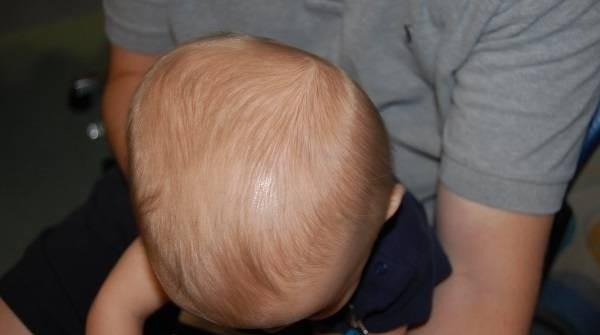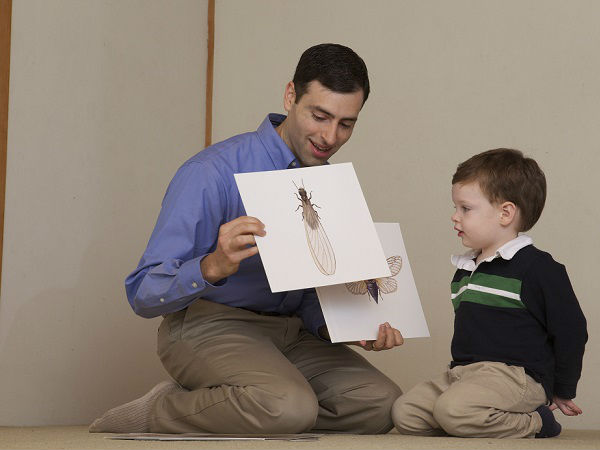Although it is only a small part of the body, the baby's upper part makes mothers very interested and even worried. In fact, how much protection should an infant's tip of the head be? Is it possible to recognize the baby's health by observing the fontanelle?
content
What is newborn systole?
How is a normal infant's absorption?
Functions of the infant's head
How long does the infant's suckle take?
The most common concerns about the baby's tenderness
How to protect a newborn baby
Squeeze and health
This part of a newborn makes a pretty accurate prediction of the health condition the baby is or may experience. Mothers who have experience in raising babies often observe and notice changes in the baby's head. So how important is this for children's health?
What is newborn systole?
Immediately after birth , the mother will notice that the newborn's tenderness has 2 before and after. The anterior cone is located between the frontal bone and the crown bone. The posterior cavity is located between the parietal bone and the occipital bone.
When you touch them, you can see that these areas are soft, not as stiff as the surrounding skulls. When the baby breathes or cries loudly, the mother can also see the bulging and bulging fontanel in varying degrees.
How is a normal infant's absorption?
While the posterior fontanelle is almost closed after the baby is born (if it remains just as small as the tip of the nail and after 4 months of birth is almost completely closed), the anterior horns undergo a continuous process of change. .
Newborn babies had an average anterior duct of 2.1cm, ranging from 0.6 to 3.6cm. Especially with premature or term babies, the tip of the head is similar.

Newborn baby sucker can reflect many important information about a baby's health
Functions of the infant's head
You will probably wonder why the baby has these sockets on his head instead of a closed skull like an adult.
The reason that the baby's skull is made up of tissues and the cones connecting the bones is to protect the brain from external pressure. This is especially helpful when your baby is born through the vagina.
The point to note here is that if the baby's anterior horns have not reached the time to close, they are full or bulging. This is a dangerous sign that the pressure in the baby's brain has increased.
Maybe the baby has blood pressure, but most of them are severe and have serious diseases such as meningitis, hydrocephalus ...
How long does the infant's suckle take?
It is often difficult to identify a baby's posterior horns because it is smaller than the previous one and will close in about 6 weeks after birth. The time after completely closure is 4 months.
The anterior duct in normal conditions, the size of the anterior tubule in a newborn is 2.5 × 2.5 cm. About 3 months after birth, the horns will gradually enlarge according to the perfection of the baby's brain and head circumference.
Then it gradually shrinks again and by about 12-18 months, it will officially fill up and close.

After one year, your baby's horns will close and complete
The most common concerns about the baby's tenderness
Because this is an important organ but quite fragile, many mothers care about the baby's fontanelle
Squeezing is not dangerous?
Even though the soft labyrinth is like that, the baby's brain is still very firmly protected in a sclera. Therefore, you don't need to panic when you touch your baby's lips.
This also means, you should be comfortable washing your baby's hair because these gentle movements cannot damage the inner brain area.
The baby's lips bulge
This is due to the movement of blood through the pyramid. This is very normal and your baby is completely healthy.

15 Interesting Facts About Infant Development Not Every Mother Know Infants react quickly to skin contact, have a heart rate 2 times faster than adults. What's more, mom? Update 15 other interesting facts about infant development now to know how to take better care of the baby, mom!
Newborn baby's suckle is too big
The size of the lobes is very different, large or small depending on the structure of the head of each baby. For babies with abnormally large lobes, it may be due to hypothyroidism , malnutrition or bone disorders.
Infant systole closed early
When the fontanelle closes due to premature ossification, the baby's skull may not continue to grow and affect the development of the brain.
In this case, the doctor will use a special cone to re-open the tube, or the baby needs to undergo surgical intervention.
The posterior taper of a newborn is concave
If the anterior sag is sagging, it shows that the baby is dehydrated, through manifestations such as severe vomiting, diarrhea, malnutrition ... In addition, the baby's sag may rise when the baby is fussy, so it is necessary to calm the baby check carefully.

The bulging or sunken bulge is a sign of danger that mothers should pay attention to
How to protect a newborn baby
The gentle way of taking care of the newborn , like the nurses instructed in the hospital, was to protect the baby's eardrum safely. Some other notes to remember to promptly "examine" the health of baby's tapering at home:
Occasionally touch the baby's pinch to check its health, but it should be gentle, not too strong, making the child afraid and hurt. The number of touches also depends on the child's attitude and health at that time.
You can use a hat to protect the head as well as keep your baby warm. Especially after bathing, the scalp needs to be dried immediately and kept warm with a hat so that children do not lose heat that leads to colds or other dangerous diseases.
You don't always wear a baby hat, which can cause heat and heat in the summer. Parents should only wear hats for children after bathing, when it is cold or in windy areas.
Squeeze and health
When observing the fontanelle, the mother can recognize a number of health problems that the baby has encountered. For example, when the cavity is deep, the mother can understand that the baby is dehydrated and needs to breastfeed enough milk to replace the lost water.
A raised bulging bulge can indicate head injury or brain infection, especially if your baby has a fever or is sleepy. However, in cases where the baby is vomiting or fussy, the fontan can also swell a little but not dangerous to your health.
If the fontanelle closes before 2 months, the baby's brain or head bone can be transformed early. As a result, the cerebral part of the brain cannot develop and greatly affects the intelligence of the baby.
The fontanelle does not close but expands with age. A problem with the thyroid gland will affect the perfection of the skeleton, especially the skull.
In most cases, the mother has no reason to worry about infant fontanation. If you are concerned about rare disorders, do not hesitate to ask your doctor to help you check your baby's condition for the most accurate answer.















